The Czech army prefers the Puma BMP and is looking for a replacement for the T-72 tank.
The Czech government sent nine applicants a request to participate in a tender to replace the BMP-2. Apparently, such projects of the Czech industry as the BMP Sakal and Wolfdog were not considered by the army as a suitable replacement for the BMP-2. The following infantry fighting vehicles were considered as a possible replacement and, in this regard, their leading manufacturers were invited to participate in the contract application process:
1. CV90 by BAE System
2. ASCOD 2 from General Dynamics European Land Systems (GDELS)
3. PSM's Puma, a joint venture between KMW and Rheinmetall
4. Rheinmetall Lynx
5. G5 PMMC from German FFG
6. Tulpar from the Turkish company Otokar
7. Kaplan-20 from Turkish FNSS (a joint venture of BAE Systems and Nurol Holding)
8. Namer developed by Israeli ordnance corps
9. Oto Melara's Dardo
The Italian and Israeli companies did not respond to the Czech request, or at least did not respond before the application deadline. It is worth noting that the Dardo BMP and the Namer version of the BMP platform would lose because of their characteristics that do not meet the standards of modern standards taken by their competitors. According to current standards, Dardo has insufficient reservations and firepower — just a chain-driven 25-mm cannon plus outdated TOW ATGMs — and worse mobility compared to other options. In turn, the Namer is too heavy a machine with an outdated power unit with insufficient power, but with a higher fuel consumption compared with modern diesel engines. When buying new BMPs, air transportability and compatibility with the existing infrastructure are some of the determining factors, and these are clearly not the merits that Namer armored vehicles can boast.
Recently Namer was shown with a new uninhabited tower.
It is also worth noting that at the time of the publication of the request for participation in the competition, a new version of Namer with an uninhabited tower was not presented. At that time, the only available configuration for the Namer infantry fighting vehicle was limited to several prototypes equipped with the remotely controlled weapons module (DUMV) Samson Mk 1. This DUMV is also installed on the Czech armored vehicles Pandur II. In this version, the module is armed with a Bushmaster II 30-mm automatic cannon, machine gun and launcher with two Spike-LR ATGMs. Using this DUMV instead of a specialized uninhabited tower has one major drawback - it does not have adequate protection and it can easily be incapacitated by fire from a machine gun, since the ammunition system and electronics are not protected by armor.
In August, the Israeli army introduced a new version of the Namer BMP, equipped with an uninhabited turret, which was specifically designed for this machine. According to the developer, this BMP will have improved characteristics. The tower is not a ready-made solution by Elbit Systems or Rafael; rather, it includes technologies from many companies that took into account the numerous wishes of the Israeli armed forces. It has two sighting systems Elbit System COAPS, an active defense system Trophy-MV from Rafael (a lightweight version of the KAZ tank Merkava) and various weapons, including a 30-mm Bushmaster II gun with chain drive, a coaxial machine gun, a retractable ATGM launcher and a 60-mm mortar mounted in the body.
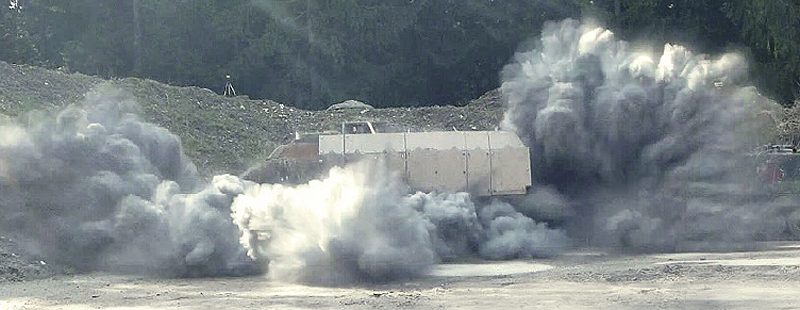
Armored car G5 PMMS was rejected by the Czech Republic
Based on the technical specifications of the applicants, the modular armored personnel carrier G5 РММС (protected mission module carrier) was excluded before the start of the actual tests. Its disadvantages are the total mass of 26,5 tons, low-power 560 hp engine. and limited protection options were too substantial to compensate for the low cost. The Kaplan-20 armored vehicle of the “new generation” from the Turkish company FNSS had the same problems, which may well be exacerbated by the political friction between the European Union and Turkey, which are currently at a historic low. For the same reason, the Tulpar BMP of the Turkish company Otokar, which, considering its mass, armament and level of protection, could become a serious alternative to the proposals of well-known manufacturers, along with Kaplan-20 was also excluded from the Czech tender.
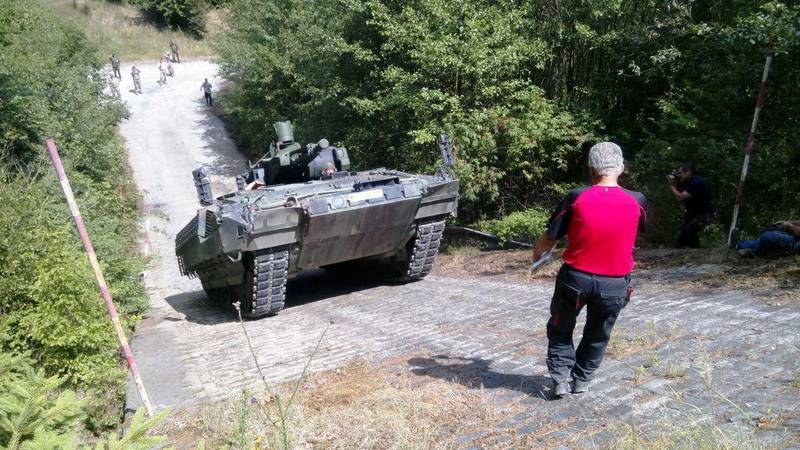
German BMP Puma climbs the slope during tests in the Czech Republic
This meant that only four machines — ASCOD 2, CV9030 (in two versions), Puma and Lynx — remained in the competition. These four vehicles underwent lengthy trials at the Libava military facility in the Czech Republic. These tests lasted six weeks and included fire tests, high-speed driving on roads, cross-country runs, overcoming walls and barriers, overcoming ditches, water obstacles and other types of tests. The first series of static and dynamic fire tests was carried out on targets at distances 700, 1200 and 1800 meters. But while the exact list of tests is not published. The final test data was collected before the relevant requirements were issued by the Czech Ministry of Defense, which is a rather strange approach.
According to Czech sources, the German BMP Puma won the estimated tests of the Czech army indirectly. Although no official comments were published during the tests, the Puma machine, as the Czech website Armadni Noviny wrote. proved its "technological superiority." What exactly this statement meant was not clear, except that Puma appeared to have surpassed its competitors. As noted by German experts. The BMP Puma managed to hit a "significantly larger" number of targets during fire tests. Apparently, a good level of protection for Puma is also part of this “superiority”, but it is possible that high power density in combination with an advanced hydropneumatic suspension allowed the Puma armored vehicle to win the competition after running trials (during running trials conducted by MTU engines, the Puma car showed better performance compared to the tank Leopard 2).
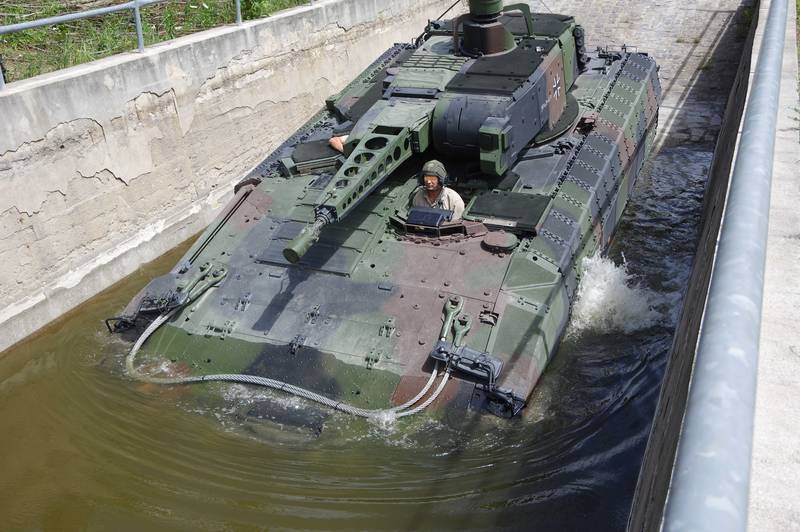
BMP Puma overcomes during the test water barrier
Without going into details about the reasons for the superiority of Puma over other machines, the Czech Ministry of Defense showed interest in purchasing this particular infantry fighting vehicle, and not in cheaper offers. Puma is the preferred choice, but because of its high cost, a rubber track system is also considered as an option. Given that the other three machines — ASCOD 2, CV90, and Lynx — were presented with rubber tracks, it’s not clear how to solve the problem, although theoretically a lighter version of Puma with rubber tracks could be developed. The first meeting was held between the German PSM and the Czech state-owned company VOP CZ to discuss the details of the possible purchase of Puma cars. VOP CZ has entered into agreements with all four finalists on a possible deal involving local assembly and production of components. In addition to PSM, KMW, Rheinmetall, Hensoldt Optronics, MTU Friedrichshafen, Jenoptik Advanced Systems and Dynamit Nobel Defense also took part in the negotiations. Presumably, PSM has already submitted technical documentation on the variants (except for the BMP version) of the Puma armored vehicle, suitable for the Czech army.
The Czech Ministry of Defense allocated a budget in the amount of 1,916 billion euros for the purchase of 210 new BMP and other options based on a single chassis, followed by an option for another 100 machines. That would be enough to buy the Puma 210 BMP for the declared value of about 7 million euros per piece (according to Czech sources), but in fact only half of the budget is for the purchase of new cars. The second half of the budget will be spent on the creation of infrastructure, the organization of logistics and training, that is, the funds will be spent on the purchase of spare parts and simulators, the creation of training centers and repair shops. At the moment, this means only one thing - Puma is too expensive!
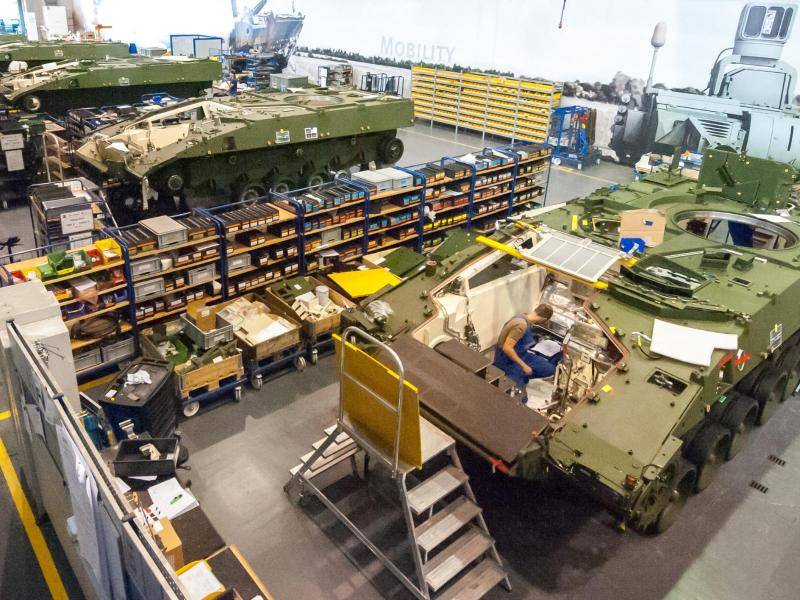
Production of Puma machines in Germany
In order to somehow cope with the high cost, various possibilities are explored. PSM proposes to create a full-fledged production line in the Czech Republic, which would help reduce costs (for example, the salaries of workers in Germany are on average three times higher than in the Czech Republic) and create jobs, people would pay more taxes to the treasury and this is even more indirect would help reduce the cost. All Puma BMPs for the Czech Army can be manufactured in the country, and if desired, even some of the components of the German Army vehicles could be manufactured here, for example, currently some cables and sensors for the fire extinguishing system are already manufactured in the Czech Republic.
Alternatively, you can get financial assistance for the purchase of weapons from the new European Union Defense Fund, created this year. A fund with annual payments of up to 5,5 billion euros can be used to fund research and development, as well as arms procurement. An EU member can ask for support and submit a project, after which the foundation can allocate money. According to the Czech-language websites, these funds, apparently, can be spent on armaments produced only by European companies, and all four applicants have their headquarters in the EU countries (even the American GDELS is registered in Madrid).
And last but not least, proposals are being made for the purchase of two different machines at once. Puma could only serve as a BMP. whereas, according to Czech specialists, ASCOD 2 or Lynx could be used as a support vehicle, for example, as an ambulance (MedEvac), control center, reconnaissance vehicle and evacuation vehicle. The disadvantage of this approach is the complication of logistics, infrastructure and additional training, which is necessary when operating two types of machines.
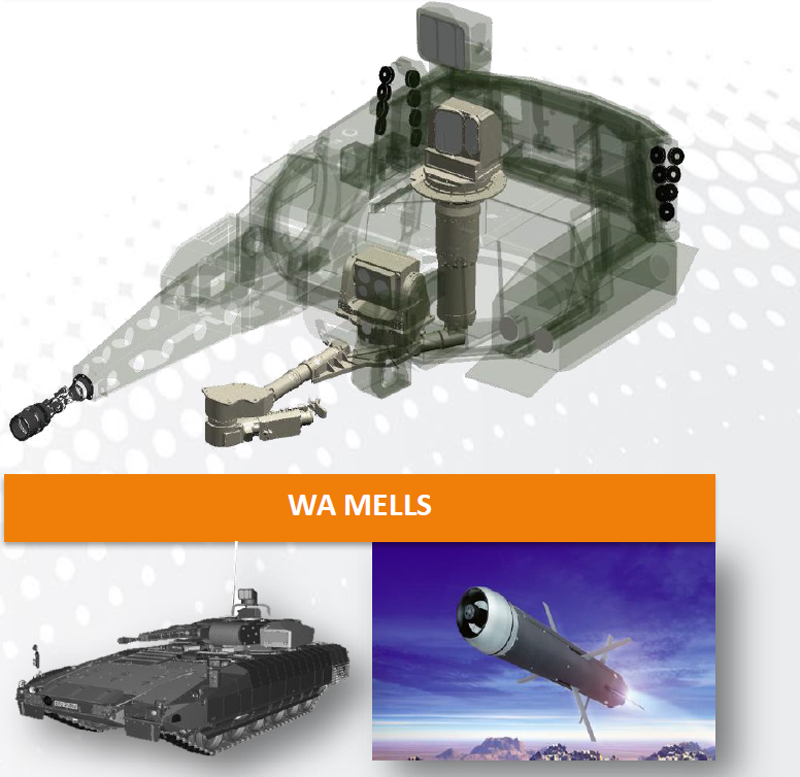
3D Puma Tower Model with MELLS Launcher
Theoretically, it would be possible to manufacture all the machines in Germany, since the initial order of the German army will be executed in the 2020 year, namely this year it is planned to begin production of the new Czech BMP. In accordance with the plans of the army, by the 2024, all Czech infantry fighting vehicles must be manufactured. In this case, the German production lines will not stop and continue to produce a hypothetical Czech machine Puma, which will have several differences from the German version (for example, local radio stations, a machine gun already in service with the Czech army and other minor differences).
Although the German army is carrying out plans for the second batch of Puma infantry fighting vehicles, there is currently no planned schedule for its production. The German Federal Audit Office recommended waiting until the machines meet all the initial requirements of the operator. And so far, so far, for example, it is still necessary to integrate the MELLS Spike-LR launcher and the auxiliary 40-mm TSWA grenade launcher module, which was recently contracted. Until the end of the second party’s entry into the troops, the outdated Marder model will continue to serve in the German army side by side with the new Puma. Therefore, the 200 BMP Marder is being upgraded with a new night-vision system, a third-generation ATTICA thermal imager and the MELLS launcher option for the Spike-LR ATGM.
Lynx in the BMP variant at the Libau military training ground
Do not forget about the fourth challenger - the armored vehicle of the CV90 family of the BAE System company, which was nominated for the Czech competition not only as the main BMP, but also as an auxiliary vehicle for operation together with the Puma BMP. As is known, in comparison with other proposals, this machine has a lower loading capacity due to the lower gross mass and internal volume, which may be the reason for not considering the CV90 as the platform sought. In addition, there are problems associated with procurement prices. Although this fairly reliable platform was relatively cheap at first, which contributed to its widespread adoption, with the addition of new technologies, each successive CV90 version became more and more expensive.
Another aspect not in favor of CV90 is a lower level of localization. BAE Systems, although seeking to cooperate with local partners, leaves the production of the body at its enterprises; only the tower and a few components can be manufactured by the enterprises of the country of operation.
All export CV90 cases are manufactured by BAE Systems
It is worth noting that the CV90 is a great machine, but its main advantage is not believed to be its superior performance. The fact that it was adopted by various countries demonstrates the adaptability of the structure, and the multitude of options indicates the possibility of developing the concept. CV90 began its path to success at a time when all the major Western armies had already built and adopted their infantry fighting vehicles a decade earlier and therefore could not offer new advanced solutions that would seriously compete with CV90 in the international market. Machines offered exclusively for export, for example, Panzer unter minimalem Aufwan (armored car for a minimal cost), created by Krauss-Maffei in 80-ies, TH-495 from Thyssen-Henschel, various main battle tanks from Vickers companies (Vickers Valiant, Vickers Mk 7) and GIAT (AMX-32 and AMX-40) were not in demand due to possible problems related to logistics, training and the availability of spare parts.
Thanks to military cooperation between some of the countries-operators of CV90 machines, purchases of this platform became somewhat avalanche-the choice of one country and the adoption of the CV90 resulted in the machine taking advantage of the following tests and the process was repeated.
Swiss CV9030CH BMP without hinged armor
At the end of the Schutzenpanzer 2000 program, Switzerland chose the CV90 armored vehicle. Seven more cars took part in this competition, three of which - CV9030, Marder M12 and Warrior 2000 - passed six-week trials in this alpine country. Marder M12 was a modernization of the German BMP Marder, which consisted in the fact that KUKA's Е1 tower was installed on the modified Marder 3A4 chassis. This offer with a high level of protection and an excellent tower had the disadvantage of an old, non-modernized hull. Relatively primitive protection solution - spaced sheets of armor steel - led to an increase in mass to 34,1 tons, and this is too much for the original power unit, because the chosen machine will need to act in the same battle formations with the Leopard 2 tank (a key requirement of the Swiss army). A marder M12 with a more powerful engine and / or lower weight ceramic armor would be a better option.
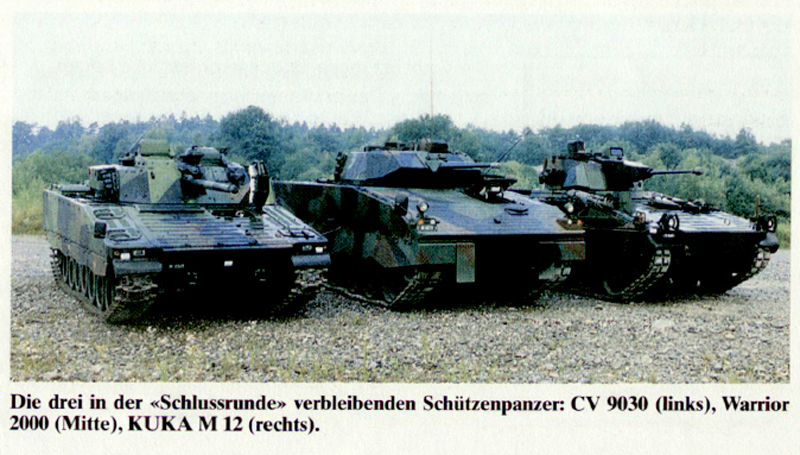
CV90, Warrior 2000 and Marder M12 armored vehicles in Switzerland
The CV90 machine was adopted with mixed feelings: some parameters were considered positive, while others were skeptical. The small size of the body was considered an advantage that increases the level of survivability, less likely to notice a low projection and get into it. Also, the advantages of the CV9030 platform were the separation of fuel from the habitable compartment, which was not in other offers, and the simplified adaptation of the system of additional booking. This additional protection consisted of MEXAS ceramic modules up to 70 mm thick (depending on the installation location) and could be installed in a few hours. Last but not least, a running gear with seven track rollers (instead of six) is better suited for deep snow.
However, as always, there is a reverse side of the coin. A smaller case means that the machine cannot boast of sufficient internal volume and has worse ergonomics compared to the Marder and Warrior variants.
Because of the lack of firepower, the CV9030 tower was the worst of all the proposals. The problem was mainly related to ergonomics and a fire control system that was not fully digitized at that time. The OMS did not include an independent optics for the commander or an additional sight, when working at night, you could only count on one outdated first-generation thermal imager.
The BMP Warrior 2000 differs in the modified case on which the Delco tower is installed
Armored Warrior 2000 showed itself best in the Swiss trials. Its tower, supplied by the American company Delco, was the most advanced tower proposed. It was distinguished not only by modern sights of the commander and the shooter, but also by modern program functions, for example, by fully automatic tracking of targets. The base armor of the hull and turret was made of aluminum, as a result, the gross weight of the vehicle was 31 tonne, which is relatively small for such sizes. To increase the level of protection on top of the aluminum construction, additional sheets are screwed onto the bolts, possibly from ordinary steel. In addition, due to the large size of the Warrior 2000, its ergonomics was the best among all tested machines.
Being a new machine, based to a limited extent on the Warrior BMP, the Warrior 2000 had some growing pains that negatively affected the reliability of the car. The manufacturer of the most advanced of the proposed Swiss BMP, the British company GKN, brought to the attention of the Swiss army that all these problems can be fixed, but soon sold its defense units to Alvis. This company owned the developer CV90 armored vehicles, the company Hagglunds, and later became part of BAE Systems. Alvis had no incentive to maintain two different production lines for the BMP market, which ultimately led to the curtailment of the Warrior 2000 project.
The Swiss Army ordered the CV9030 because it had the best price / performance ratio, not because it was the most efficient vehicle! The military was not happy with the tests of the original CV9030, so a number of changes were required before selling Switzerland to bring it to the CV9030CH standard. The original engine was replaced by a more powerful Scani engine with 670 horsepower that meets the Euro II exhaust standard. The hull of the vehicle was increased: the roof of the troop compartment was raised by 100 mm, and to solve some of the problems with ergonomics, the car itself was extended by 200 mm. The rear doors were replaced with a single aft ramp to facilitate getting in and out of the car. Instead of the sight of the operator-gunner of an outdated model, a second-generation thermal imager was installed. The MSA’s computer was replaced, and local production systems (machine guns, radio stations, smoke grenade installations) were installed. Only forty sets of reservations were purchased, but most of the cars remained unprotected from medium-caliber ammunition.
Other improvements were planned, for example, the integration of a separate sighting system for the commander in order to obtain search and percussion characteristics, but they were considered too expensive.
Germany in 2002 also tested an improved version of the Swiss CV9030CH car, which was equipped with a set of mounted armor covering a large area, as well as an armor plate on the bottom. Germany has stopped the development of the next generation NGP family of vehicles in connection with the development of the concept of asymmetrical combat operations and international peacekeeping operations. NGP was too heavy to transport by airplanes, as its weight varied from 51 tons in the basic configuration to 77 tons when installing the reservation kit.
Several options were evaluated, but in the end, the CV9030 was rejected, being in last place among all the tested machines! The German army considered that the main factors hindering the purchase of the CV90 platform are: poor protection against anti-tank mines; insufficient level of protection, inappropriate to such a large mass; and low chassis upgrade potential. Since none of the machines met the German requirements, the Neuer Schutzenpanzer project was started, in which some technologies and concepts of NGP were used; later it was renamed several times - Panther, Igel and, finally, Puma.
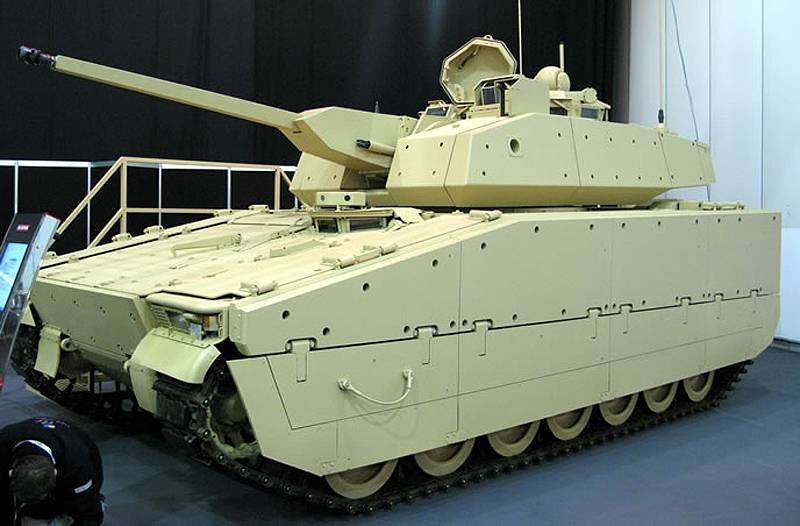
CV90 armored vehicle proposed for Scout-SV
The UK also tested the CV90 car for its Scout Specialist Vehicle (Scout-SV) program, which was part of the FRES British Army project. For these tests, BAE Systems decided to reduce the size of CV90 for the Scout-SV project in order to raise the level of protection. According to the manufacturer, this option CV90 complied with the British requirements for protection and had a level of mine protection "like an OBT." But, ultimately, the UK chose to buy several ASCOD 2 armored vehicles from GDELS, despite the fact that BAE Systems is a local company; Large size and high payload were key factors in favor of ASCOD 2.
Why was the CV90 not selected in all these cases? Perhaps this is due to the fact that its widespread distribution makes some people believe that the car initially surpasses all other options and buy something else - it means to be accused of lying and corruption.
However, BAE Systems did not give up, creating several presentations in Czech and English: about the development of CV90, its advantages and why the Czech army should buy it, and not other machines.
According to these documents, the fifth-generation CV90 has a ballistic protection in accordance with STANAG 4569 6 level (30-mm BOPS [slug-proofed prock)] from 500 meters distance, and its mine protection corresponds to STANAG 4569 4 / 4b distance (10 / 9030b (XNUMXb) (XNUMXb (XNUMX) (XNUMX meters)) any point of the machine); it is today the highest standardized level of mine and anti-bullet protection. Protection systems against cumulative projectiles, such as RPGs, additional roof protection, and active protection are available for the CVXNUMXCZ platform, but were not installed on tests in the Czech Republic.
According to the manufacturer's CV90, BAE Systems, the previous versions of the machine provide ballistic protection equivalent to the 5 Level “plus” or “plus-plus” of the STANAG 4569 standard, while the only one of the earlier versions of the CV90 Mk III has mine protection 3 / 3b STANAG 4569 - This is the expected level of mine protection for such a machine. The same level of mine protection was achieved on the Marder 1A5 BMP and on the Bradley BMP with the BUSK kit (Bradley Urban Survivability Kit — increased urban survivability).
The problem, though not directly related to the competition for the Czech BMP, is that. that there is no official standardized data for the “level 5 +” and “level 5 ++” protection levels. It is confirmed only that they meet and exceed the requirements for ballistic protection Level 5 STANAG 4569. Another problem is the different test volumes for compliance with the STANAG 4569 standard and the AER-55 specifications. The very first edition of the STANAG 4569 standard defined protection only against armor-piercing sub-caliber projectiles (BPS) in order to reach the fifth level of ballistic protection, and did not define the sixth level. Later options also define protection against armor-piercing feathered sub-caliber shells (BOPS). So what does “level 5 +” and “level 5 ++” mean? Is this related to the requirements for protection against 25-mm BOPS due to the fact that the updated standard did not exist then? Is this due to the requirement for protection against 30-mm BPS or BOPS? What exactly 30-mm caliber should be, BOPS 30xXNNUMX mm, 165x30 mm or 170x30 mm? What is the distance and angle of the meeting? Is the sixth level of the STANAG 173 standard simply not mentioned because it did not exist at the time when these machines were designed?
NATO standard STANAG 4569 / AEP-55 defines the levels of protection of armored vehicles and methods of their assessment
One example of a machine whose protection level exceeds the STANAG 4569 5 Level, but does not reach the 6 Level, is the Austrian BMP Ulan, an ASCOD version with hinged MEXAS armor. This machine is protected from 30-mm BOPS of unknown type, shot from the 1000 distance of meters on the frontal projection 30 °, that is, from the axis of the machine along 15 ° in each direction. Modern 30x173 mm BOPSs from manufacturers such as Nammo and Rheinmetall can penetrate armor more than 110 mm thick from the 1000 meters distance, while the estimated armor penetration from 500 meters will be approximately 120-130 mm of armored steel. A steel plate 29 mm thick is enough to stop the BONS 30x173 mm from the 1000 distance of meters and at the meeting angle 15 ° - the effective thickness of the plate almost quadruples at this angle. However, STANAG 4569 The 6 level determines the protection from the BONS 30x173 mm at a distance of 500 meters and an angle of encounter up to 30 °. Therefore, in this case, a steel sheet with a thickness of approximately 60-65 mm is required, which is more than twice the thickness of the side armor, which provides protection in accordance with the fifth level of STANAG. According to BAE Systems, the newest Norwegian version, on which the proposed CV9030CZ model is based, is distinguished by a modernized booking system and has the highest level of protection compared to the existing CV90 variants. The photos of the fifth generation CV90 armored vehicle show a noticeable increase in armor thickness, at least in some places.
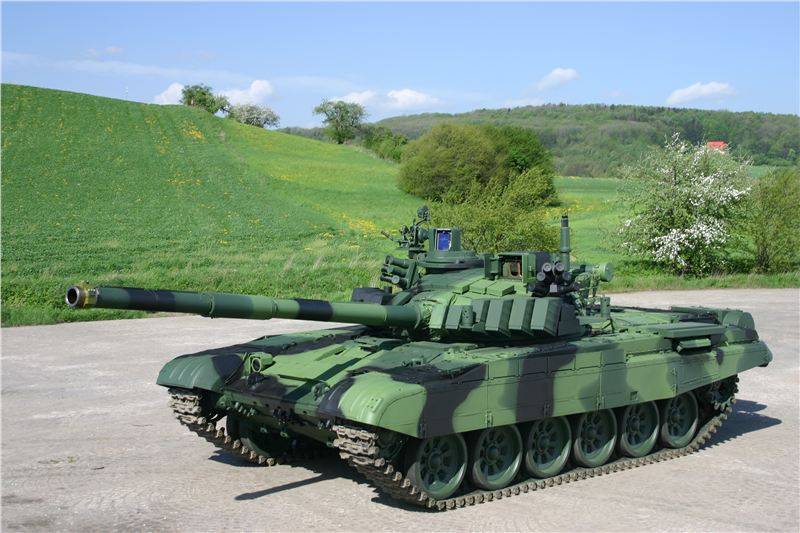
Tank T-72M4CZ should be replaced by a new tank
Production of the new Czech BMP is scheduled for 2020-2025 years. In response to the latest Russian developments, the Czech military at the same time plan also to replace the T-72M4CZ - perhaps the most combat-ready version of the T-72 in the NATO countries - with a more efficient platform. According to Czech media, there are only two real candidates: the German Leopard 2 and the Israeli Sabra. Currently, the production of the American M1A2 Abrams, the South Korean X2 Black Panther and the Japanese Tour 10 continues, but they all have one common drawback - too expensive. Abrams consumes too much fuel and spare parts, while long distances to Asian countries will negatively affect the cost of spare parts and the training of crews. The Italian С1 Ariete, the British Challenger 2 and the French Leclerc are no longer produced, and they are made in very limited quantities.
New tanks Leopard 2 may be too expensive for the Czech Republic
In theory, the tank Leopard 2 should be considered as the preferred candidate for the new MBT. The tank is widespread in the world, and many companies offer various sets of its modernization, for example, KMW, Rheinmetall, RUAG and Turkish Aselsan. The Leopard 2 tank uses a lot of modern technologies, it has many unique advantages compared to the Israeli Sabra and other existing tanks, for example, the L55 smoothbore gun with a length of 55 caliber from Rheinmetall. Three of the four countries neighboring the Czech Republic have adopted the Leopard 2 tank, which can be an advantage in terms of logistics.
However, there is one, but a very big problem associated with the acquisition of Leopard 2 tanks. If you buy new tanks, it will be a very expensive purchase. But even the purchase of used tanks and their upgrading to an acceptable configuration, for example, the Leopard 2A4 version built by 80-s, will not give a real increase in capabilities compared to the T-72M4Cz - the German platform will cost the Czechs a penny. Therefore, they thought about the previously mentioned EU Defense Fund, which would help to acquire German tanks.
On the market in good condition, only about a hundred tanks remained, but, in addition to the Czech Republic, Bulgaria, Croatia and Poland were not averse to buying them. This can lead to a war of bids and, as a result, to an increase in prices. Alternatively, you could rent a Leopard 2 tank from another European country, but the question is which one? Neighbors Germany and Poland are building up their fleets of tanks and it is unlikely that they will agree to give up the tanks of the Czech army.
Turkish tank M60T Sabra is a deep modernization of the outdated American-made M60AZ
It was expected that Israel would offer a modern tank Merkava 4, but after studying Czech requirements and evaluating the operational situation, he decided to offer only the Sabra tank in its latest version. The Sabra tank is a modernization of the outdated American tank M60AZ; it was also adopted by the Turkish army under the designation M60T Sabra. It should be noted that although Merkava is in service with only Israel, in the past decades it has been offered to several countries, including Switzerland (previous versions of the Merkava 1 or 2) and Sweden (Merkava 3 in the 90s). Sweden has a very good relationship with Israel, exchanging technology with this country. For example, the Swedish delegation at one time became familiar with the concept of the modular booking of the Merkava 3 tank, but the tank was not accepted for service because it could not withstand competition with European and American proposals.
Sabra, of course, is a cheaper option compared to the Leopard 2, which is definitely an advantage. However, due to the fact that Israeli companies participated in its development, it may not be possible to use EU money to buy these tanks. Depending on the version, the Sabra tank might even surpass the Leopard 2 - at least the 80 models without costly upgrades - in terms of firepower and potential armor protection. It is unlikely that Sabra will be able to compete with the more modern versions of Leopard 2 in any important area, be it defense or maneuverability. The upgraded main battle tank M60 is protected by hybrid armor - a combination of passive compositional armor and an active protection system - and, if the customer wishes, the Iron Fist active defense complex developed by Israeli Military Industries (IMI). The original cannon has been replaced with a 120-mm smoothbore gun, the Elight Systems Knight III fire control system allows you to operate at night, fire in motion and operate in shock search mode. The latest version of the Sabra 3, presumably equipped with armor, which is a modification of armor modules that are installed on the latest versions of the Merkava series tanks.
The choice of the M60 as a base for upgrading Sabra is uncertain. On the one hand, the M60 tank is widespread and fairly cheap - this is good. However, on the other hand, the M60 is perhaps one of the worst tanks to upgrade. This is initially a heavy tank, and you need to thank for this thick, but not effective in weight, armored steel. This is one of the highest tanks and therefore the installation of modern sighting systems and optical-electronic systems will increase its visibility to unacceptable levels. The tank also does not correspond to modern layout solutions, the ammunition kit is located in the manned compartment and there are no expelling panels. The performance of the Sabra tank is worse than that of the Leopard 2 and other modern MBTs due to the weak suspension and low-power engine on the 1000 hp, which is really not enough for a tank weighing 60 tons.
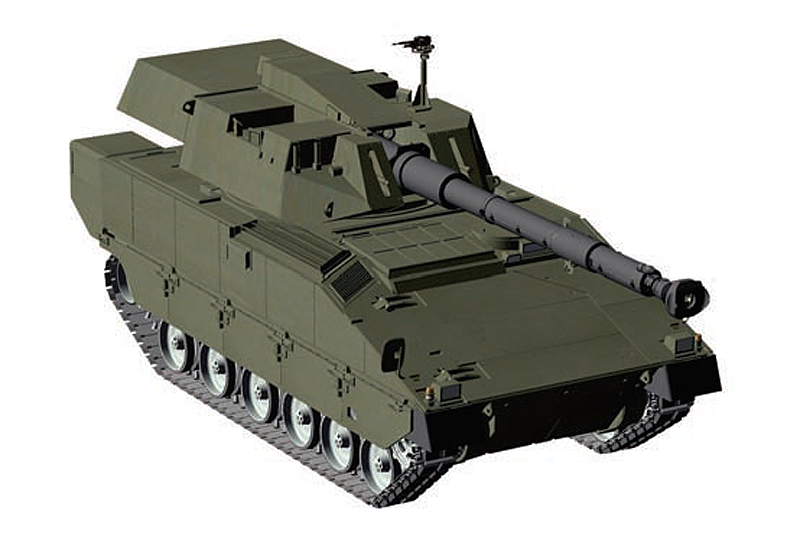
Option light tank ASCOD 2, proposed by GDELS
Another option considered by the Czech army is to buy a light / medium tank based on the BMP chassis. Well-known examples of machines of this type, for example, CV90105 and CV90120-T, as well as various versions of light tanks based on the ASCOD platform. According to the company Rheinmetall, the Lynx model could be used as a medium tank. As a real example, the project for a light / medium tank based on Marder, proposed by Indonesia. According to some experts, the Puma BMP (or similar BMP) is suitable for the medium tank concept. Its manufacturer claims that an 120-mm smooth-bore gun can be installed on the Puma platform.
The big problem is that such a light / medium tank is not an equivalent replacement for the T-72M4CZ tank. None of these machines has sufficient frontal projection protection to withstand the ingress of large-caliber BOPS or anti-tank tandem warheads. In addition, the adoption of such a machine will require a review of the combat training system and military doctrine.
On the materials of the sites:
www.nationaldefensemagazine.org
www.rheinmetall.com
www.baesystems.com
www.gdels.com
www.armyrecognition.com
www.fnss.com.tr
www.nammo.com
www.imisystems.com
pinterest.com
www.alamy.com
forum.militaryparitet.com
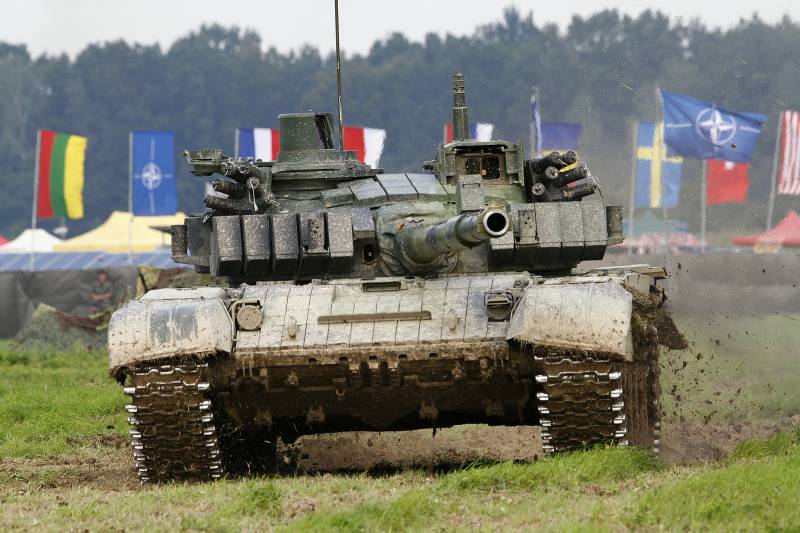
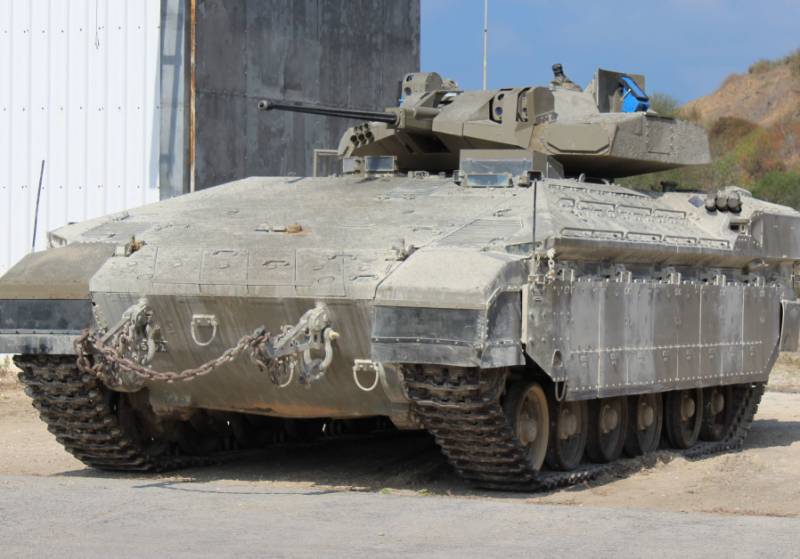
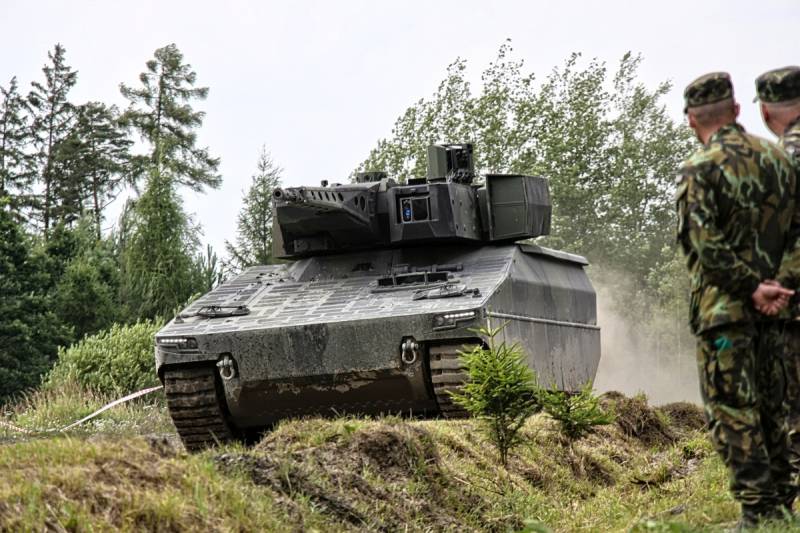
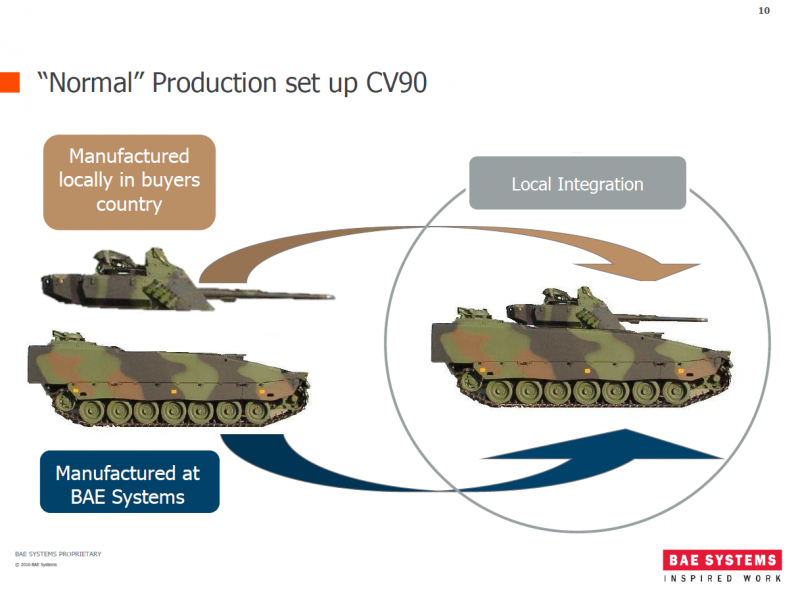
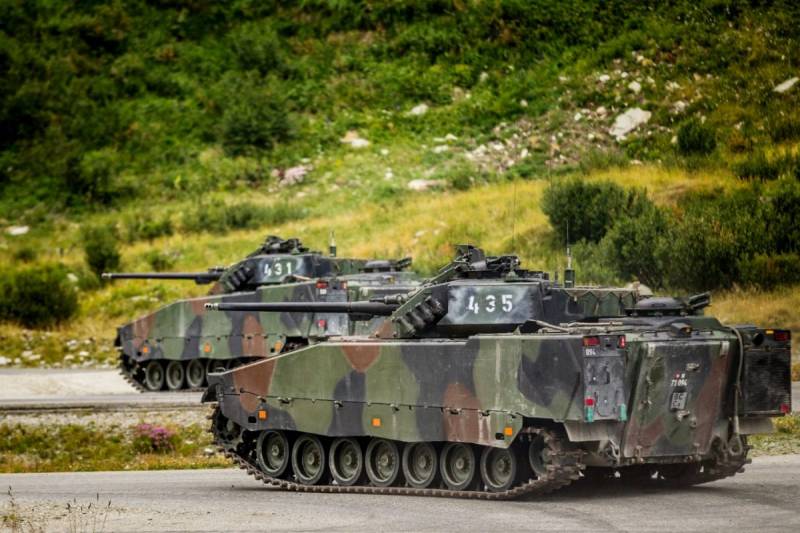
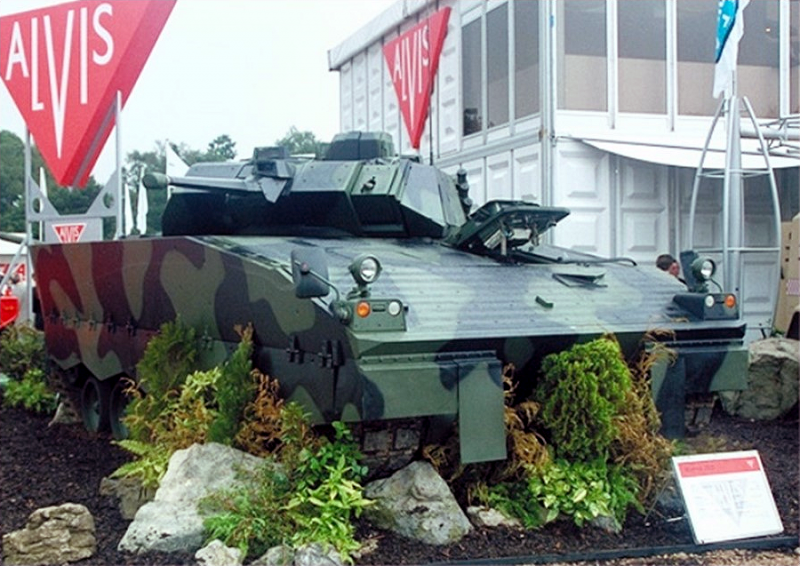

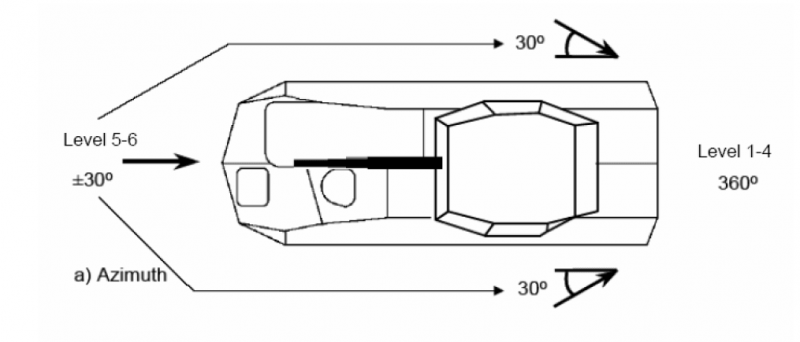
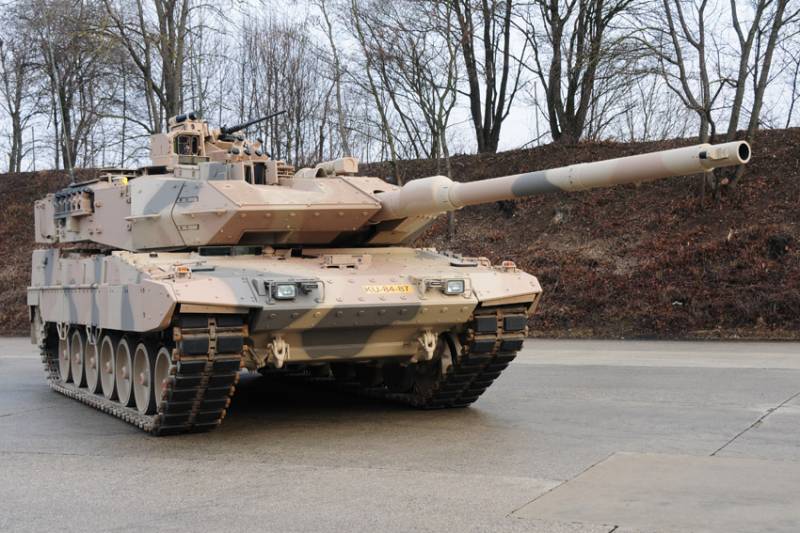
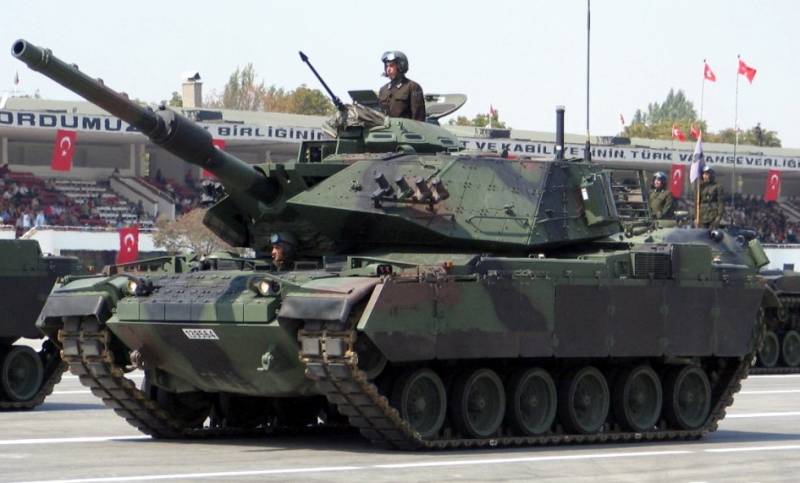
Information